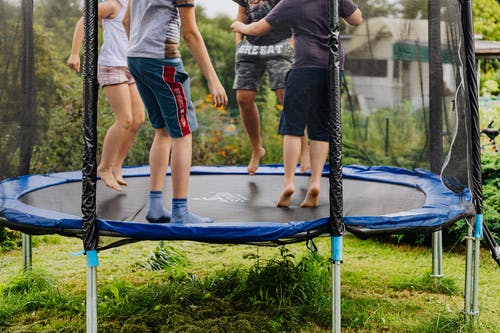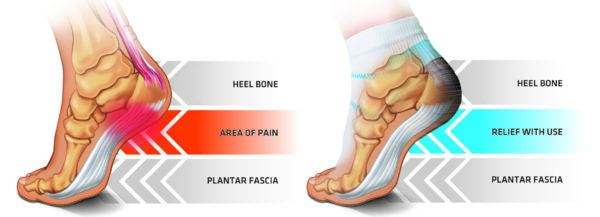This post is all about plantar fasciitis and whether or not you can trampoline with it. Plantar fasciitis is a common foot injury that occurs when the tissue on the bottom of your foot becomes inflamed, tight or stretched. This condition typically develops gradually over time through repetitive activities involving weight-bearing activity such as running, jumping, hopping or standing for long periods of time. It’s very important to protect yourself from developing this painful condition by doing stretches before and after any sort of exercise routine.
Plantar fasciitis is one of the most prevalent overuse injuries in athletes today, yet it remains difficult to diagnose correctly as well as treat appropriately because so little information exists about how to successfully manage this condition without recurring bouts of inflammation which lead to more damage within the foot itself – eventually ending up with chronic pain if left untreated for too long.
Is it Safe to Trampoline with Plantar Fasciitis?
Yes! As long as you’re taking precautions beforehand to stretch properly and pay attention to how much weight you put on your feet.
Althought trampoline injuries are not common, but they do occur. Trampolines can cause many types of athletic injuries including fractures and sprains. Trampolining does provide a great cardio workout that may help you shed the pounds faster than jogging or biking, however this activity is best done once your plantar fasciitis has healed.
Where Does Plantar Fasciitis Manifest Itself?
To begin, the plantar fascia is a large band of tissue that runs beneath the foot’s bones. This band is in charge of absorbing pain while running, jumping, stomping, and other comparable actions are performed. This tissue has one end connected to the heel bone and the other near the toes. Plantar fasciitis is a condition in which the plantar fascia swells and becomes inflamed, causing discomfort when we put too much pressure on our foot.
Plantar Fasciitis Causes
Plantar fasciitis can occur for a variety of causes. It’s particularly common in those who participate in high-impact team sports and activities. Plantar fasciitis can affect professionals in Frisco, TX who stand on their feet all day, such as nurses. Foot discomfort is common among those who have flat feet or high arches. If you think you could have plantar fasciitis, look for shoes that are intended to absorb shock and provide ample of support.
Signs and Symptoms of Plantar Fasciitis
Plantar fasciitis is a painful condition that affects the arch of the foot and the bottom of the heel. The majority of people compare the sensation to a bruise or pain. When you sit down, any soreness generally goes away. However, the longer you have symptoms of plantar fasciitis, the longer it takes for the discomfort to go away on its own. You risk having a rupture and becoming prone to additional injury if you don’t seek treatment for plantar fasciitis.
Plantar Fasciitis Treatment
Stretching the feet and heels before working out is one of numerous techniques for avoiding plantar fasciitis. This also relieves any undue strain on the plantar fascia. Of course, seeing a specialist to treat plantar fasciitis is the best option.
Plantar fasciitis therapy is determined by the findings of your test, although minor symptoms may be treated with a mix of pain medicines and orthotics. Other people may benefit from steroid injections and physical therapy to alleviate discomfort from physical activity. Surgery is usually reserved for severe or persistent plantar fasciitis problems.

